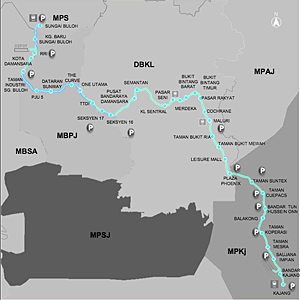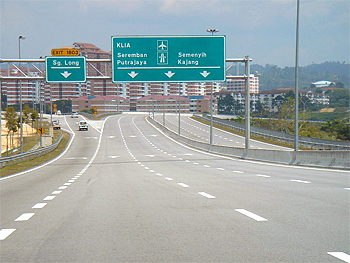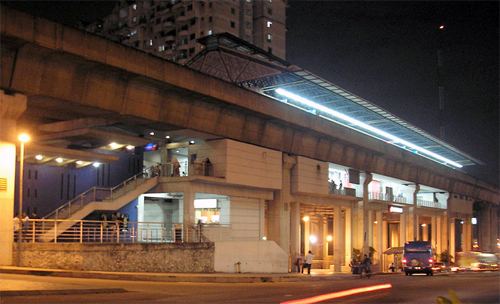
Touted as the new “backbone” of public transport in Klang Valley, the Mass Rapid Transit (MRT) has been the talk of the town since its first line of its overall scheme was revealed on 13 Feb 2011.
An estimated 51km long, the Sungai Buloh-Kajang line will have 35 proposed stations. Total construction cost will only be known in May, Parliament was told on 15 March. But Land Public Transport Commission (SPAD) CEO Nur Ismail Kamal has said it could reach RM50bil.
While most people have expressed support for the MRT, those whose lands would be acquired for the rail line are understandably worried and upset. Just as disturbing is the lack of information about the total MRT master plan. Without this, can the public really make an informed assessment about the project, especially for those who stand to lose their properties to make way for the rail line?
Troublemakers or legitimate victims?
“Jika saya tak kena, saya [akan] support [project ini] juga,” a civil servant whose home in Cheras would have to make way for the Sungai Buloh-Kajang line, told me during a MRT briefing in Kajang on 10 March.
Part of his land has already been taken for the Cheras-Kajang Expressway. This time, his entire family will be displaced by the rail line once the alignment is confirmed. The 55 year-old government servant did not want to openly oppose a government project and so declined to be named.
“Put yourself in their shoes. Those who aren’t [directly] affected are of course happy to support the project, but we can’t be that selfish,” Taman Tun Dr Ismail (TTDI) residents’ association Hatim Abdullah said in a phone interview.
TTDI, Taman Suntex and Kampung Batu 10 Cheras are some of the “critical areas” that would be affected by land acquisition, according to the detailed environmental impact assessment released on 14 Feb.
But residents from Kampung Sungai Balak, Kajang are probably the most unlucky. The shrinking Malay reserve land is going to be affected by land acquisition for the third time in a little over a decade.

They have had to give up some of their land for the Cheras-Kajang Expressway in 2000, the Silk highway six years later, and now for the 25ha MRT depot.
It is uncertain yet how many people in total would be displaced by the Sungai Buloh-Kajang line as the railway’s alignment has yet to be finalised.
Nevertheless, it should also be noted that the planners are trying to minimise land acquisition and cost by building the MRT line mostly along roads and highways utilising existing road reserve lands.
It is also commendable that the government agency supervising the MRT project, SPAD, has been organising dialogues with residents to brief them about the project and to collect feedback.
Lack of information
Despite that, there are still complaints from members of the public that they lack access to information.
As public display of the project plan at the local councils is only available during office hours, those working have to take time off to view it. In addition, the information officers in charge of the public displays are generally not available during lunch time, when most working people would choose to visit.
There are also niggling doubts among those to be affected by land acquisition of their properties, that the government would listen to their feedback and adopt their suggestions for alternative routes.
This is because while the railway’s alignment has yet to be fixed, it has been announced that open tender is expected to be called in April. Land acquisition is scheduled to take place in May and June, and construction starting in July.
Since the public consultation period only ends on May 14, isn’t it too soon to call for open tender in April, acquire land by June, and start construction in July? All this smacks of a rushed job and begs an explanation.
The rush to begin the Sungai Buloh-Kajang line is puzzling to say the least, more so when the 20-year master plan for Greater Kuala Lumpur / Klang Valley public transportation system is only expected to be ready by this September. Why can’t the entire plan be revealed for public feedback before rushing to begin just one rail line?
Holistic planning needed
With declining public transportation usage from 34% in 1985 to a low 18% in 2009, I understand the urgent need to revamp our public transportation system. Indeed, as a “greenie”, nothing is more exciting that seeing a comprehensive transportation plan that would drastically reduce the number of cars on the road.

However, we all know that the MRT itself is insufficient to boost public transportation system in the Klang Valley. It needs to be integrated with buses, taxis, the Light Rail Transit (LRT) and KTM commuter system.
Really, until that 20-year master plan is unveiled, the public would not be able to scrutinise the Sungai Buloh-Kajang line effectively. Especially since the Sungai Buloh-Kajang line is only the first MRT line, and the public has little idea about how the second and third line would look like and where it would run.
Meanwhile, the least we could do is to make sure that the voices of those affected by land acquisitions are heard and their concerns taken into account.
And when the final alignment of the Sungai Buloh-Kajang line is revealed in May or June, hold the government accountable to see if they have included the workable alternative routes suggested by these communities.![]()
Gan Pei Ling would support any public transportation plan, with the conditions that they are planned properly and executed with care to ensure minimal disruption to the people’s lives during and after construction.


KOK Yoon Lee says
While in principle I support the building of MRT lines, I find the rush to start building quite perplexing especially given the billions we are going to spend on it. Wouldn’t it be better to get it right first time without the problems of our existing LRT where stations don’t connect etc? After all, the contracts can still be awarded to whoever they will be awarded to in the end. At least give us poor suffering taxpayers something of value for all the money spent.
siew eng says
This patch-up solution of one area without looking at broader and related issues reminds me of how the DNA Act was passed. At a forum on Data Privacy Day, a lawyer shared that during the drafting of the DNA law, the government assured that the Private Data Protection Act would be passed together, to ensure that any abuse of DNA samples and privacy would and could be addressed in the other law. But the DNA law was passed on its own, and when the Data Protection Act was passed…dum, dum, duuuum – only then did the people know that the government, the biggest holder of private information, is excluded from responsibility and accountability under the law. I wonder whether the same hanky-panky is at work here too, in not revealing the greater plan.
JW Tan says
Considering the LRT lines aren’t even integrated with each other (if you have to go from underground to above ground and spend 5 minutes walking, it isn’t an interchange), I won’t hold my breath.
fara Abdul says
I am skeptical about this project. In KL, we have PUTRA, STAR, Monorail, KTM etc, but traffic jams are still the same, if not worse. How will the MRT reduce traffic jams? Will the MRT be a well-thought-out plan or will it be simply built, similar to previous railway-based transport? It’s been ages since they talked about improving our public transport system, and this is the solution they come up with? Why can’t they do something about the existing system rather than throw in another when we don’t have any idea what kind off mess it would generate?
Kong Kek Kuat says
@ fara Abdul
When the government is all about power-sharing (i.e. “I get this seat and you get this seat”), then the consequence is that there is no governing.
It is not the project you should be skeptical about, but the people who are going to put the project into action.
But hey, the government is promising stability and development even as the Sarawak state election nears. Would you buy that promise?
Actually Verbose says
In addition, BEFORE the construction.
Dr AR Said says
Whether we like it or not, we need to sacrifice something to give way for development. If the government doesn’t do anything or do something, the rakyat is always complaining, especially those [in the opposition]. The bottom line is, we cannot satisfy every human being on this earth. Moving forward, my suggestion is, if you don’t like the current government’s way of handling this matter, show your power during the general election.